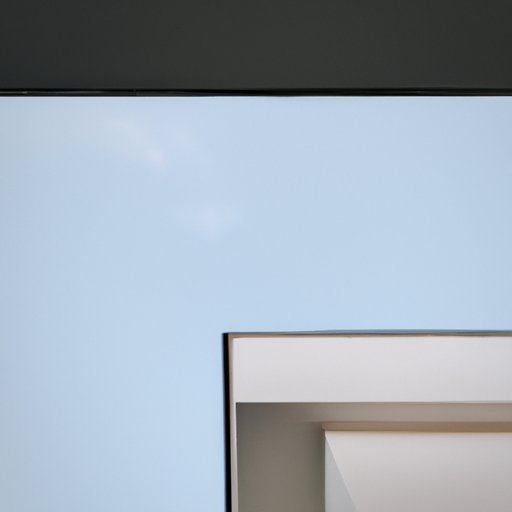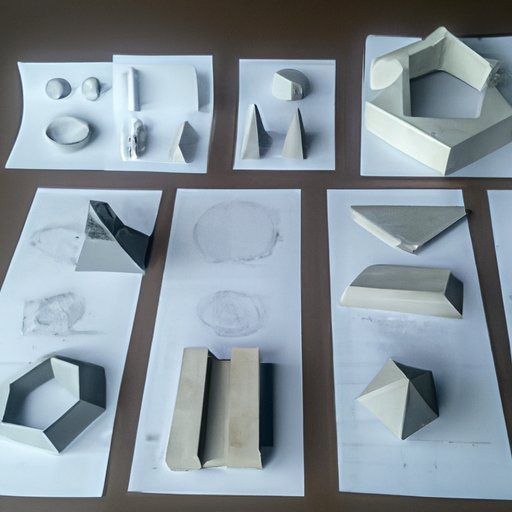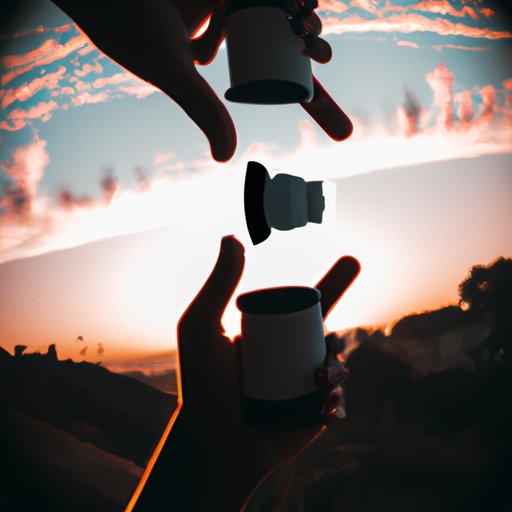Introduction
Form is an important concept in photography, as it helps to create interesting compositions and evoke emotion in viewers. It refers to the shape, size, and volume of a subject or object and how those characteristics interact with light and shadow.

Definition of Form in Photography
Form is a three-dimensional quality of a subject or object that can be seen in two-dimensional photographs. It is created by the interaction of light and dark areas, as well as shapes and lines. According to a study by the University of California, “Form is the basic building block of all visual art.”

Overview of Different Types of Forms
Forms can be either natural or man-made. Natural forms include things like trees, rocks, and clouds, while man-made forms include things like buildings, cars, and sculptures. Forms can also be classified as geometric or organic. Geometric forms are characterized by straight lines and angles, while organic forms are characterized by curved lines and more natural shapes.
Capturing Form with a Camera
Capturing form with a camera requires an understanding of how light and shadows interact with a subject or object. By manipulating the lighting, the photographer can create interesting shapes and shadows that enhance the form of the subject.
Exploring Light and Shadow to Enhance Form
Light and shadow play an important role in creating form. They help to define the edges of an object or subject and create interesting shapes and textures. By adjusting the angle of the light source, the photographer can create dramatic shadows that add depth and dimension to the image.
Using Form to Create Interesting Composition
Form can also be used to create interesting composition. By positioning the subject or object in relation to other elements in the frame, the photographer can create a sense of balance and harmony. The use of lines and curves can also lead the viewer’s eye around the image and create a sense of movement.
Capturing Movement with Form
Form can also be used to capture movement. By using fast shutter speeds and panning techniques, the photographer can capture the motion of a subject and create dynamic images. This can be especially effective when photographing sports or wildlife.
Examples of Form Used in Famous Photographs
Throughout history, many famous photographs have made use of form. Here are some examples of how photographers have used form to create powerful images.
Ansel Adams’ Moonrise, Hernandez
Ansel Adams’ iconic photograph, Moonrise, Hernandez, is a great example of how form can be used to create a striking composition. The mountain range in the background creates a strong, geometric form, while the moon and clouds create softer, organic shapes. The contrast between the two forms adds depth and interest to the image.
Henri Cartier-Bresson’s Behind the Gare Saint-Lazare
Henri Cartier-Bresson’s Behind the Gare Saint-Lazare is another example of how form can be used to create a powerful composition. The image features a man jumping over a puddle, and the geometric shapes of the puddle, the tracks, and the buildings in the background create a sense of movement and energy.
Dorothea Lange’s Migrant Mother
Dorothea Lange’s Migrant Mother is a classic example of how form can be used to evoke emotion in viewers. The woman’s face is framed by her hands, creating a soft, organic shape. The contrast between the hard lines of the window and door behind her adds to the feeling of desolation and despair.

Tips for Creating Unique Forms in Your Photos
Creating unique forms in your photos can be a fun and rewarding experience. Here are some tips for getting started:
Look for Patterns and Repetition
Patterns and repetition can be used to create interesting forms in your photos. Look for patterns in nature, such as waves on a beach or ripples in a pond, and use them to create unique compositions.
Explore Contrast Between Light and Dark
Contrast between light and dark can also be used to create interesting forms. Try playing with the light source to create dramatic shadows and highlights that add depth and dimension to the image.
Don’t Be Afraid to Experiment with Shapes
Finally, don’t be afraid to experiment with shapes. Try framing a subject with geometric shapes or look for natural shapes in the environment. You may be surprised at the results!
Conclusion
Form is an important concept in photography. It refers to the shape, size, and volume of a subject or object and how those characteristics interact with light and shadow. By understanding how form works and experimenting with different lighting techniques, you can create unique and interesting compositions in your photos.
(Note: Is this article not meeting your expectations? Do you have knowledge or insights to share? Unlock new opportunities and expand your reach by joining our authors team. Click Registration to join us and share your expertise with our readers.)
